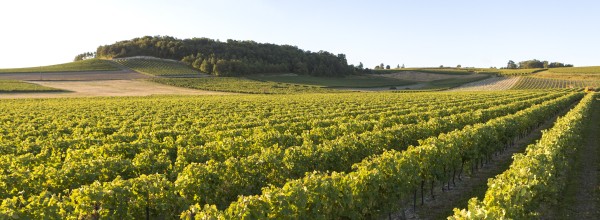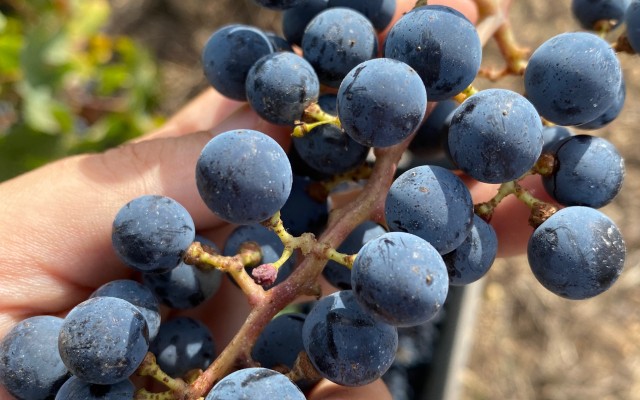
Bordeaux, an irresistible vineyard
Published on
BORDEAUX , an irresistible vineyard
Bordeaux, the world's wine capital.
The Bordeaux wine region, world-famous for the quality and beauty of its wines, has a long history dating back to antiquity. It is made up of several appellations that produce wonderful white, red, rosé and sparkling wines.

Les appellations
To begin with, let's take a look at the geographical areas and appellations of the Bordeaux wine region.
To the north, we have the Médoc, with its appellations of Haut-Médoc, Médoc, Saint-Estèphe, Pauillac, Saint-Julien, Listrac-Médoc, Moulis and Margaux. These are what we call Left Bank wines in relation to the Garonne.
Further north, on the right bank, we have the Côtes de Blaye and Côtes de Bourg.
We then continue eastwards from Bordeaux, still on the right bank, with the world-famous appellations of Saint-Émilion, Pomerol and Fronsac. Here we find the following AOCs: Fronsac, Canon-Fronsac, Lalande-de-Pomerol, Pomerol, Lussac Saint-Émilion, Montagne Saint-Émilion, Saint-Georges-Saint-Émilion, Puisseguin Saint-Émilion, Saint-Émilion, Saint-Émilion Grand Cru, côtes de Francs and côte de Castillon.
We then cross the Dordogne to reach the great Entre-Deux-Mers appellation.
Finally, we return to the left bank south of Bordeaux to find the Graves, Pessac-Léognan and Sauternes-Barsac appellations.


L'histoire
According to research, the first vines date back to Gallo-Roman times. In the 1st century, the Bituriges Vivisques (a Celtic warrior people) planted the first grape variety: Biturica. This variety is the ancestor of Cabernet. The first mentions of vines in Bordeaux are attributed to Ausonius (a 7th-century Roman poet), who also gave his name to Château Ausone in Saint-Émilion.
In the 12th century, Duchess Eleanor of Aquitaine married the future King of England, Henry Plantagenet. This union gave rise to numerous commercial exchanges. The vineyards then spread to Fronsac, Saint-Émilion and Barsac. It was also in this century that the Saint-Émilion brotherhood was founded in 1199. Bordeaux's geographical location made it easy for English ships to load barrels of wine for transport to England. The main wine sent was Claret. It was named Claret because of its light red colour.
The Hundred Years' War in the 15th century signalled the end of the golden age of Bordeaux wine exports. Towards the end of the century, King Louis XI re-established trade with England. However, pre-war volumes were not restored.
A new era of prosperity for Bordeaux wines begins with the arrival of new customers: the Dutch, the Bretons and the Hanses open up new prospects for Bordeaux wines. While Clairet production picked up as before, we also saw a sharp increase in the production of dry and sweet white wines. The arrival of these new trading partners also enabled winegrowers to raise their standards of wine quality.
The Enlightenment also opened up new partners and customers around the world, particularly in the West Indies. Exports to England now accounted for just 10% of total export sales. However, London's "high society" was demanding fine and mature wines. We are also seeing the first exports of corked and sealed bottles.


The 19th century marked a turning point for Bordeaux wines. Firstly, we saw the creation of a classification: the 1855 classification. This was requested by Napoleon III for the Universal Exhibition. It only classified wines from the Left Bank. The reason for this was that the classification was drawn up by the Bordeaux Chamber of Commerce. Wines from the right bank came under the Libourne Chamber of Commerce. This was also the century of the industrial revolution, which enabled the Bordeaux vineyards to innovate in order to produce more. The diseases that ravaged the vineyards (oidium, phylloxera, mildew, etc.) were successfully countered thanks to innovation.
The following century was one of quality and structuring. In 1936, the INAO (Institut National des Appellations d'Origine) was created. Its aim was to enhance the value of products through better quality. In Bordeaux, structuring was also taking place. In 1952, the brotherhoods got together to found the Grand Conseil des Vins de Bordeaux. Three years later, the INAO created the Saint-Émilion classification. In 1987, the Pessac-Léognan appellation was created.
In the 21st century, the wine capital is reinventing itself. Châteaux are opening their doors and creating wine tourism tours. The various wine festivals and the growing number of workshops and wine bars are enabling the general public to discover a multitude of wines and colours.
Rankings
The vineyards of Bordeaux are also unique thanks to their various classifications. Between the 1855 and INAO classifications, the Graves Grand Cru Classé, the Crus Bourgeois and the Artisans, we tell you all about it.
The 1855 classification applies only to wines from the Left Bank. From the Médoc to Sauternes, you'll find wines classified 1885. It is in two parts, one for the reds and one for the whites. For red wines, there are the premiers crus, the deuxièmes crus, the troisièmes crus (Château Desmirail), the quatrièmes crus (Château Prieuré-Lichine) and the cinquièmes crus. For whites, there are superior first growths, first growths (Château Guiraud, Château Sigalas-Rabaud) and second growths (Château Doisy-Daëne). This classification cannot be revised.
There are 16 grands crus classés in Graves, with no distinction between red and white wines (Château Carbonnieux, Château Malartic-Lagravière). Château Haut-Brion is the only wine to be classified twice (1885 and Grand Cru Classé de Graves). This classification, which dates back to 1953, is not subject to revision.
The Saint-Émilion classification was created in 1955 by the INAO. There are now 85 properties, including 71 grands crus classés and 14 premiers grands classés. The classification is reviewed every 10 years, with downgrades and upgrades sometimes leading to debate.
The Crus Bourgeois label allows certain Médoc wines to be recognised as a guarantee of quality. There are three levels: Crus Bourgeois, Cru Bourgeois Supérieur and Cru Bourgeois Exceptionnel. There are 250 châteaux in this classification.
The Crus Artisans du Médoc represent wines produced (at the time) by craftsmen (coopers, cartwrights, etc.). There are 36 châteaux in this classification and it is reviewed every 5 years.

grape varieties
Bordeaux also boasts a host of red and white grape varieties. The main ones are Merlot, Cabernet Sauvignon and Cabernet Franc for the reds. The whites include Semillon, Sauvignon Blanc and Muscadelle.
Merlot accounts for 66% of total plantings for red wines. Semillon accounts for 45% of white wine plantings.
L'architecture
As well as the quality of its wines, the Bordeaux wine region is also characterised by the beauty of its landscapes. Recent investments have enabled some châteaux to become real architectural feats, combining tradition and innovation, such as Château La Garde and Château Prieuré Lichine. However, if you're a fan of traditional architecture, you'll be able to admire châteaux such as Château de Cérons and Château de Portets.

The Bordeaux vineyards are irresistible for their history, their classifications and the beauty of their landscapes. Don't hesitate to visit the estates where the winegrowers will be delighted to open their doors to tell you their unique stories and let you taste their wonderful wines.
Wine tourism allows you to discover a rich historical, viticultural and architectural heritage that will leave you breathless.

